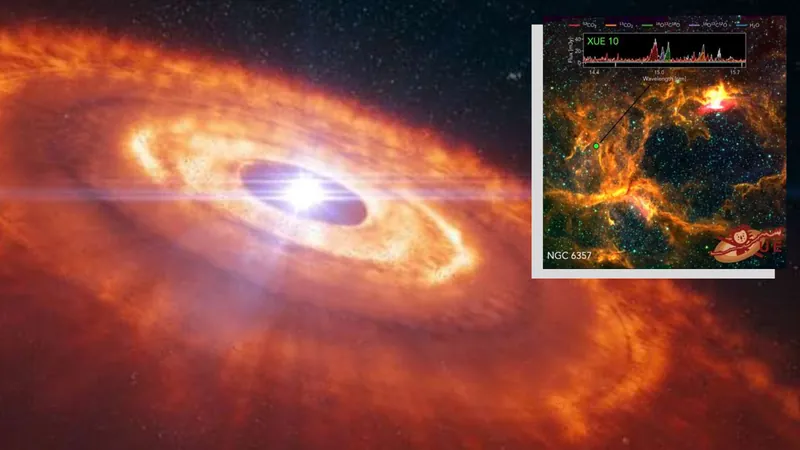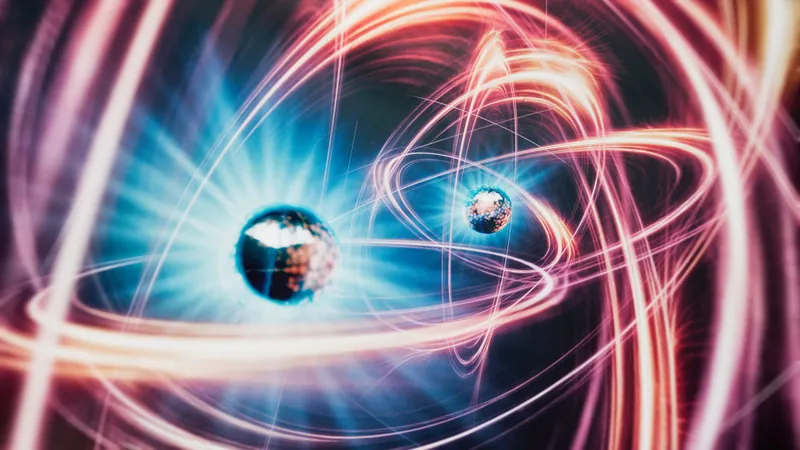
A Surprising Discovery: James Webb Space Telescope Uncovers Unusual Planet-Forming Disk
2025-08-29
Author: Arjun
Astronomers Challenge Norms with New Findings
In a groundbreaking revelation, the James Webb Space Telescope (JWST) has unveiled a peculiar disk of gas and dust surrounding an infant star, potentially upending our understanding of how planets are formed.
The Mysterious Disk Around Star XUE 10
This protoplanetary disk, circling the star XUE 10—located approximately 5,550 light-years from Earth in the star-forming region NGC 6357—has an unusual chemical profile. Researchers report an unexpected abundance of carbon dioxide while exhibiting a stark deficiency in water. This unusual chemistry poses a significant challenge to conventional models of planet formation.
The Role of Intense Radiation
The XUE collaboration, a team dedicated to understanding the impact of extreme radiation on protoplanetary disks, highlighted these unusual findings. Jenny Frediani, a member of the team from Stockholm University, described how, unlike other nearby disks that feature water vapor, this one is notably rich in carbon dioxide.
A Shift in Planet Formation Theory?
In typical scenarios, scientists believe that planet formation arises when icy "pebbles" from the outer reaches of a protoplanetary disk migrate inward. As they heat up, these ice formations subliminate into gas, facilitating the growth of planets. However, the disk surrounding XUE 10 exhibits a predominance of carbon dioxide, suggesting a different narrative altogether.
Unexpected Isotopes Raise Further Questions
The JWST's observations revealed not only a high concentration of carbon dioxide but also molecules enriched with rare isotopes like carbon-13 and oxygen-17 and oxygen-18. These findings may provide critical insight into the origins of meteorites and comets from our early solar system.
Implications for Planetary Science
Maria-Claudia Ramirez-Tannus from the Max Planck Institute emphasized the revolutionary capabilities of JWST in uncovering the chemical signatures of distant protoplanetary disks during pivotal planetary formation phases. The study underscores how extreme radiation environments—common in areas where massive stars form—can drastically alter the foundational elements of future planets.
Understanding these effects is crucial for comprehending the vast diversity of planetary atmospheres and their potential for supporting life.


 Brasil (PT)
Brasil (PT)
 Canada (EN)
Canada (EN)
 Chile (ES)
Chile (ES)
 Česko (CS)
Česko (CS)
 대한민국 (KO)
대한민국 (KO)
 España (ES)
España (ES)
 France (FR)
France (FR)
 Hong Kong (EN)
Hong Kong (EN)
 Italia (IT)
Italia (IT)
 日本 (JA)
日本 (JA)
 Magyarország (HU)
Magyarország (HU)
 Norge (NO)
Norge (NO)
 Polska (PL)
Polska (PL)
 Schweiz (DE)
Schweiz (DE)
 Singapore (EN)
Singapore (EN)
 Sverige (SV)
Sverige (SV)
 Suomi (FI)
Suomi (FI)
 Türkiye (TR)
Türkiye (TR)
 الإمارات العربية المتحدة (AR)
الإمارات العربية المتحدة (AR)